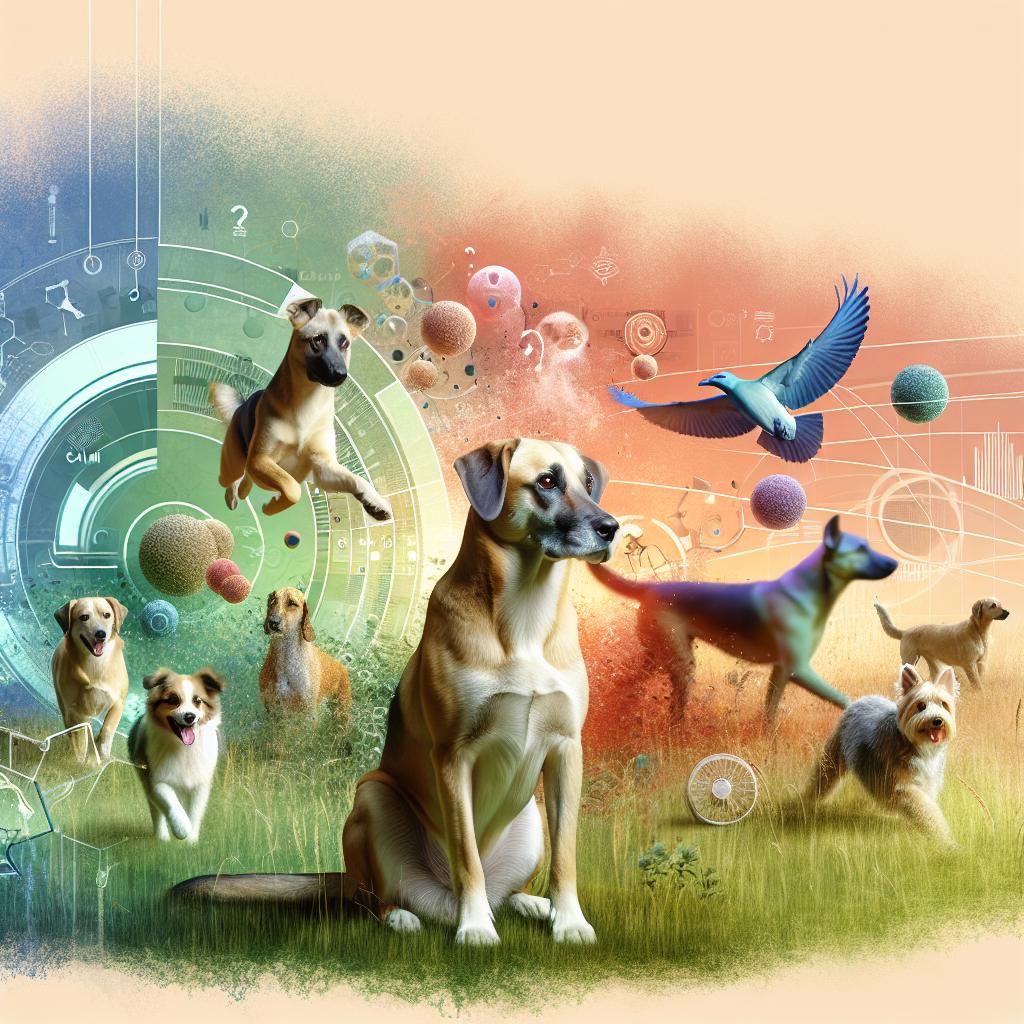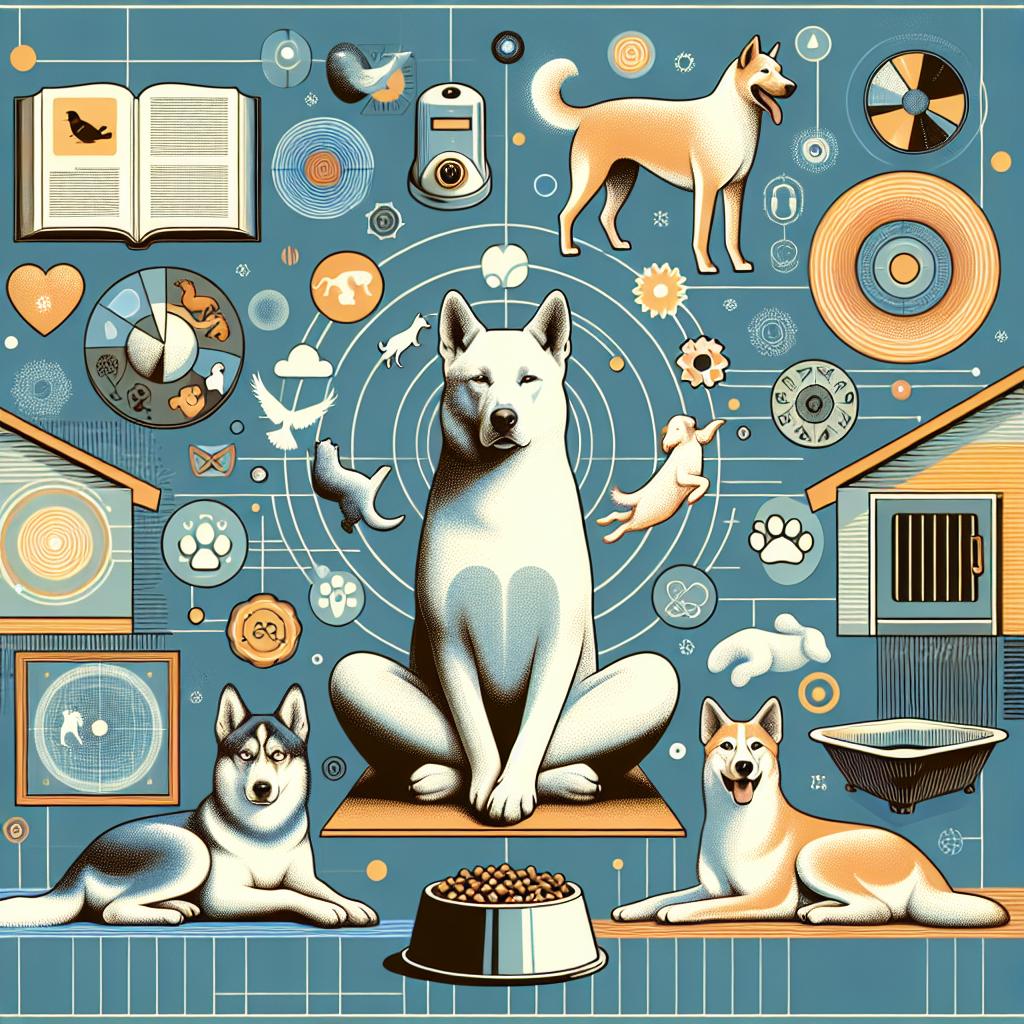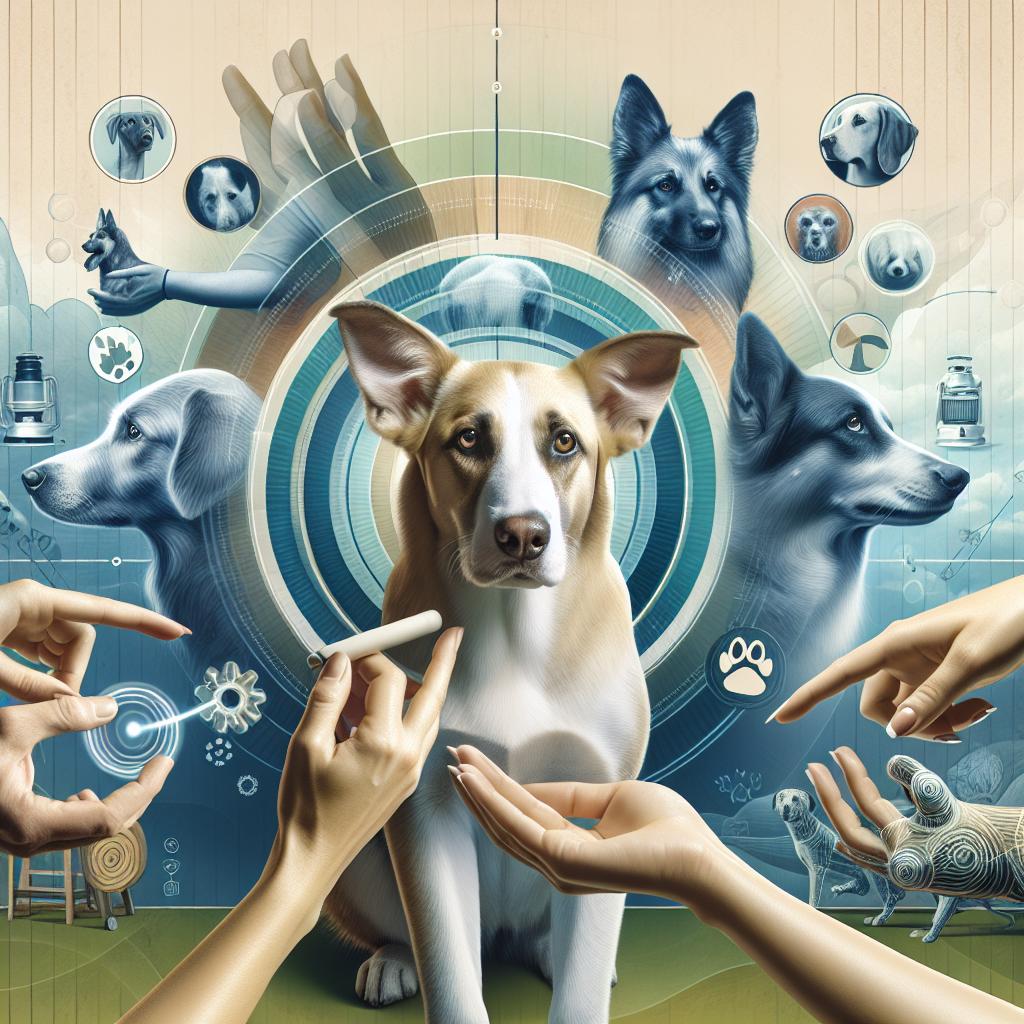Teaching Your Dog to Be Calm Around Other Dogs: A Journey to Peaceful Playdates
In the vibrant tapestry of canine companionship, few sights are as heartwarming as a group of dogs frolicking together, tails wagging in harmony. Yet, for many dog owners, this ideal can seem just out of reach. The thrill of play often gives way to anxious barks and excited lunges, leaving both dogs and their humans overwhelmed. If you’ve ever experienced the chaos of a dog that struggles to remain calm in the presence of its peers, you’re not alone. Teaching your dog to be calm around other dogs is not just a valuable skill; it’s a pathway to joyful interactions, enhanced socialization, and peaceful outings. In this article, we will explore effective strategies, training techniques, and essential tips to help guide your furry friend towards becoming the relaxed and social companion you envision. With patience and consistency, you can transform those chaotic moments into serene encounters, fostering a sense of tranquility in your dog and confidence in yourself as a responsible pet parent.
Understanding Canine Communication and Social Signals
Understanding how dogs communicate is crucial for fostering a calm atmosphere in social situations. Dogs express their feelings and intentions through body language and vocalizations. Familiarizing yourself with these signals can significantly enhance your interactions and help promote a peaceful demeanor around other dogs. Here are some key social signals to observe:
- Tail Position: A relaxed, wagging tail typically indicates happiness, while a stiff or low tail may suggest anxiety or agitation.
- Ear Position: Ears held up and forward can indicate curiosity, whereas ears pulled back may signal stress or submission.
- Facial Expressions: A relaxed mouth and soft eyes generally signal comfort, while a closed mouth or wide eyes can reflect anxiety or fear.
Recognizing these signals not only helps in training your dog to be calm around others but also aids in developing more positive social experiences. It’s important to create a supportive environment where dogs can interact freely without undue stress. Consider the following strategies for managing encounters:
| Strategy | Purpose |
|---|---|
| Gradual Exposure | Introduce your dog to other dogs in controlled, low-stress settings. |
| Positive Reinforcement | Reward calm behavior with treats or praise to reinforce good habits. |
| Training Sessions | Incorporate socialization into regular training to promote confidence. |
| Playdates | Arrange controlled playdates with familiar dogs to build social skills. |

Establishing a Calm Environment for Social Interactions
Creating a serene atmosphere plays a vital role in teaching your dog to remain calm during social encounters. Begin by choosing a quiet location, away from the hustle and bustle of everyday life. This allows your pup to focus on the task at hand rather than getting distracted by environmental stimuli. To further promote tranquility, consider the following:
- Use Soft Background Music: Gentle tunes can help lower anxiety levels and create a comforting ambiance.
- Incorporate Aromatherapy: Scents like lavender or chamomile can provide calming effects for both dogs and humans.
- Designate a Safe Space: Set up a specific area where your dog feels secure to retreat when feeling overwhelmed.
In addition to crafting a peaceful setting, it’s essential to manage your dog’s exposure to other pets gradually. Start with brief interactions at a distance, and slowly decrease the space as your dog becomes more comfortable. This step-by-step approach allows your dog to acclimate at their pace, reducing the chances of overstimulation. Consider these strategies:
| Strategy | Description |
|---|---|
| Controlled Introductions | Introduce your dog to friendly dogs in a controlled environment to assess behavior. |
| Positive Reinforcement | Reward calm behavior with treats or praise to reinforce a relaxed demeanor. |
| Regular Breaks | Take breaks during social interactions to prevent overstimulation and anxiety. |

Effective Training Techniques for Promoting Calmness
Training your dog to remain calm around other dogs calls for a combination of patience, consistency, and effective techniques. One method that has proven successful is desensitization. Begin by exposing your dog to other dogs at a distance where they feel comfortable. Gradually decrease this distance as your dog learns to remain calm. Pair this exposure with positive reinforcement such as treats and praise to create a positive association. Furthermore, incorporating controlled socialization sessions can help. Arrange playdates with well-behaved dogs to teach your dog how to interact without getting overly excited.
Another key technique is focus training. Teach your dog to maintain eye contact and focus on you when they find themselves distracted by other dogs. Start training this at home using commands like “look” or “watch me,” then gradually introduce scenarios with other dogs around. Additionally, calming exercises such as sit-stay or down-stay can further reinforce a sense of tranquility. Implementing a routine that includes controlled exposure to distractions, combined with the calming techniques mentioned, can significantly empower your dog to keep their composure. Creating a safe space, both mentally and physically, allows your dog to thrive in social situations.

Managing Real-Life Encounters with Other Dogs
When your dog encounters other dogs, staying calm becomes crucial for a positive interaction. To facilitate this, it’s essential to maintain a steady mindset and be aware of your dog’s body language. Here are some strategies to ensure that both you and your dog remain composed during encounters:
- Practice Positive Reinforcement: Reward your dog with treats and praise when they exhibit calm behavior around other dogs.
- Use a Leash Wisely: Keep your dog on a short leash to maintain control, but avoid pulling, as this can increase anxiety.
- Desensitize Gradually: Start by exposing your dog to other dogs from a distance and gradually decrease the space as they become more comfortable.
- Redirect Attention: Distract your dog with toys or commands to prevent focus on the other dog.
Creating a structured environment during encounters can make a significant difference. Consider using the following table to establish a routine when meeting other dogs:
| Setting | Action | Reward |
|---|---|---|
| Before Meeting | Calmly approach the site with your dog on a short leash. | Give a treat for staying calm. |
| During the Encounter | Assess the other dog’s behavior and wait for signs of relaxation. | Offer verbal praise. |
| Post-Encounter | Move away if either dog shows signs of stress. | Provide a favorite toy or snack. |
Q&A
Q&A: Teaching Your Dog to Be Calm Around Other Dogs
Q: Why is it important for my dog to be calm around other dogs?
A: Teaching your dog to remain calm in the presence of other dogs is crucial for their overall well-being and socialization. It helps prevent unwanted behaviors, such as excessive barking, lunging, or aggression, which can lead to stressful situations for both your dog and others. A calm dog is generally seen as more approachable, making walks and interactions with fellow canine companions more enjoyable.
Q: At what age can I start training my dog to be calm around other dogs?
A: You can begin introducing your dog to basic training techniques as early as puppyhood, around 8 to 12 weeks old. Early socialization with other dogs in controlled environments is vital. However, it’s never too late to teach an older dog new tricks. Consistency and patience are key, regardless of their age.
Q: What are some signs that my dog is feeling anxious or overstimulated around other dogs?
A: Look for signs of anxiety such as excessive panting, whining, a lowered tail, or body stiffening. Dogs may also try to avoid eye contact or exhibit signs of stress, like yawning or licking their lips. If your dog is growling or barking excessively, it may indicate that they are overwhelmed or unhappy in the situation.
Q: How can I introduce my dog to other dogs in a calm manner?
A: Start slow and create positive associations. Begin by walking your dog at a safe distance from other dogs. Reward them with treats and praise for staying calm. Gradually decrease the distance over multiple sessions, always monitoring their comfort level. If your dog remains calm, move closer, and gradually allow them to interact when they show relaxed body language.
Q: What training techniques can I use to promote calmness?
A: Techniques such as desensitization and positive reinforcement can be effective. Use treats and praise to reward calm behavior when your dog sees another dog. Additionally, practicing commands like “sit” or “stay” in varying environments can help your dog learn to focus on you, regardless of distractions around them.
Q: How can I use leash training to help my dog remain calm?
A: Leash training is essential for controlling your dog’s behavior while out and about. Teach your dog to walk beside you on a loose leash; if they pull towards other dogs, practice redirecting their attention back to you. Techniques like stopping and rewarding them for calm behavior when another dog passes can reinforce a relaxed demeanor.
Q: Can having a calm dog contribute to better social interactions?
A: Absolutely! A calm dog tends to have more positive social interactions with other dogs and people alike. By teaching your dog to be calm, you reduce the likelihood of stressful encounters. This not only improves their confidence but also makes outings more enjoyable for both of you.
Q: How long does it typically take to teach a dog to be calm around other dogs?
A: The timeline can vary greatly depending on your dog’s age, temperament, and past experiences. Some dogs may show improvement in just a few training sessions, while others may take weeks or even months. The key is consistency and patience; taking small steps allows your dog to progress at their own pace.
Q: What should I do if my dog reacts aggressively to other dogs?
A: If your dog shows aggressive behavior, it’s best to seek help from a professional dog trainer or a behaviorist who specializes in canine behavior. They can provide structured training programs tailored to your dog’s needs. Avoid forcing interactions, as it can lead to more anxiety and worsened reactions.
Future Outlook
teaching your dog to remain calm around other dogs is not only beneficial for their well-being but also contributes to a harmonious environment for everyone involved. Patience, consistency, and positive reinforcement are your best allies in this journey. Remember, every dog is unique, and progress may vary from one furry friend to another. By taking small steps and celebrating those victories, you’re not just training a skill, but nurturing a deeper bond with your canine companion. With time and dedication, you can transform any outing into a peaceful experience, paving the way for enjoyable interactions at the park and beyond. Embrace the journey, and let your dog’s calmness shine through!

